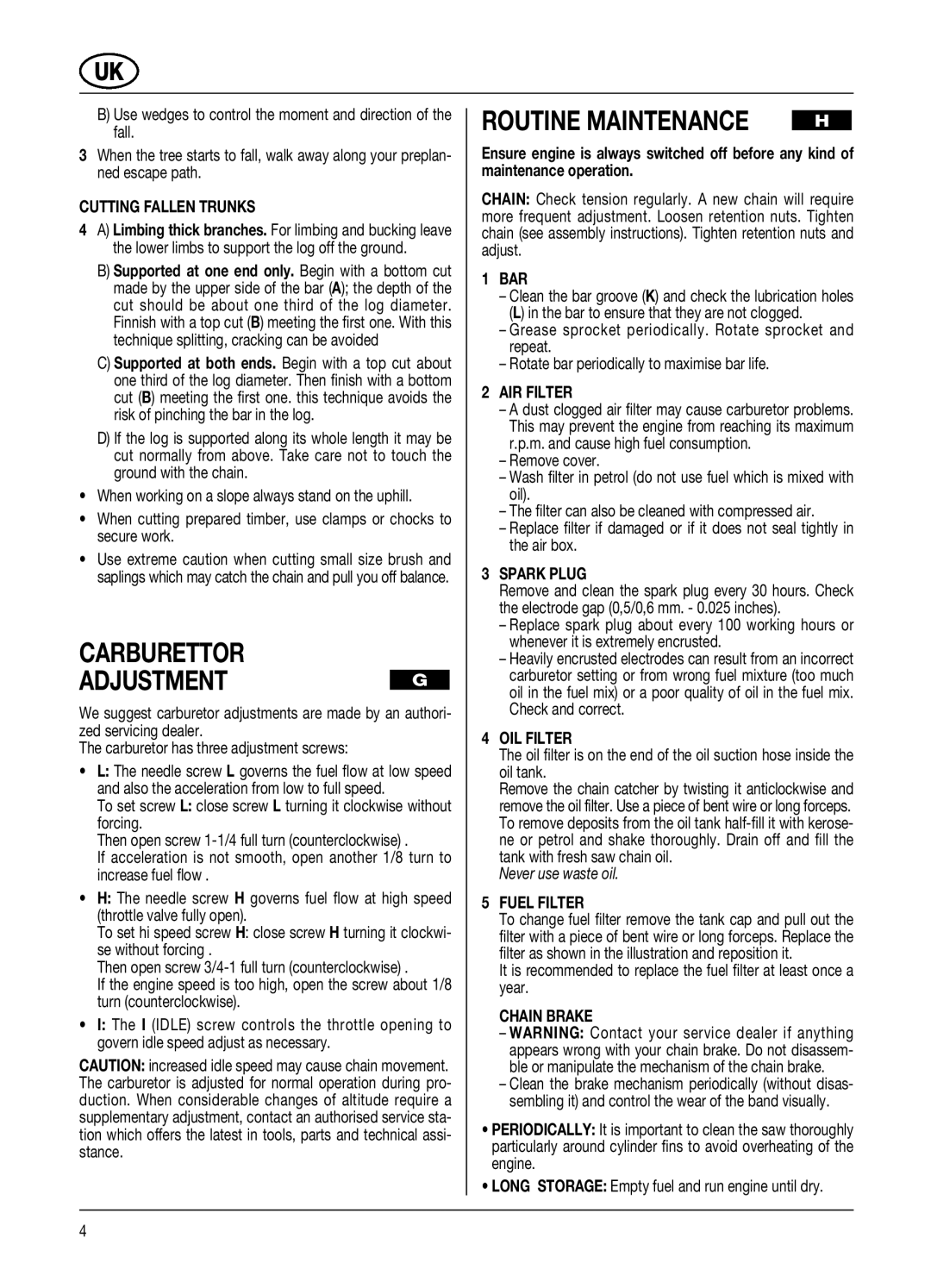PRO MAC 61 59CC, PRO MAC 54 54CC specifications
The McCulloch PRO MAC 61 and PRO MAC 54 chainsaws are powerful tools designed for both professional loggers and enthusiastic DIYers. Known for their exceptional performance and reliability, these models are equipped with advanced technologies that enhance user experience while ensuring peak efficiency.The PRO MAC 61 boasts a robust 59CC engine, providing significant horsepower for demanding cutting tasks. This chainsaw features a high-speed chain system that allows for swift cuts through tough materials, making it ideal for felling trees, bucking logs, and performing heavy-duty tasks. Its design ensures reduced vibration, which is crucial for prolonged use, minimizing user fatigue.
Equipped with an innovative air intake system, the PRO MAC 61 enhances airflow to the engine, maintaining optimal performance even in challenging conditions. This model also includes a large fuel tank, which reduces the frequency of refueling breaks and allows the user to work longer hours without interruption.
On the other hand, the PRO MAC 54 is powered by a slightly smaller 54CC engine, yet it still delivers formidable performance. This model is characterized by its lightweight design, making it easier to handle during meticulous cutting tasks. The PRO MAC 54 is perfect for users who require versatility—its balance between power and weight allows for precision cutting in tight spaces.
Both chainsaws feature an ergonomic handle and anti-vibration technology, which enhances comfort during extended use. Additionally, they come with tool-less chain tensioning systems, allowing users to quickly and easily adjust the chain tension for optimal cutting performance without needing additional tools.
Safety is paramount in both models, with essential features such as a chain brake that provides immediate stopping power in case of kickback. The fuel and oil systems are designed for easy maintenance, ensuring that both chainsaws can be kept in optimal condition with minimal effort.
In summary, the McCulloch PRO MAC 61 and PRO MAC 54 chainsaws represent the pinnacle of power, efficiency, and user-friendliness. With their advanced technologies, ergonomic designs, and safety features, these chainsaws are well-suited for a broad spectrum of cutting tasks, making them reliable companions for professionals and hobbyists alike. Whether tackling large logging projects or handling light pruning, McCulloch delivers exceptional performance that meets the demands of any job.

